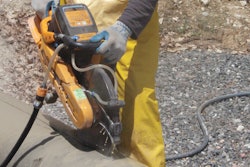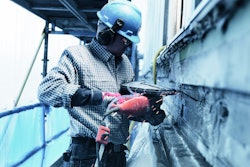Information from this article was first published in Demolition Magazine and is being reused with permission from the National Demolition Association.
The demolition section of the OSHA standards in Subpart T has accounted for the most cited rule in Subpart T for the last 10 years and accounts for 15 percent of all citations and penalties issued to demolition contractors the agency has inspected. The frequency of citations may indicate many contractors are unfamiliar with the requirement to perform and engineering survey. The engineering survey provides contractors with a tool to plan and prepare for worst-case scenarios. If contractors plan for the worst, they can be well prepared to address hazards, and, in most cases, they will be compliant with OSHA’s requirement for an engineering survey.
The current administration at the Department of Labor has placed a heavy emphasis on standards enforcement. What does this mean for the demolition industry? There will be more compliance officers, more inspections and more exposure to citations. Citations limit the ability to bid new work, so how do those in the industry adapt to this renewed emphasis? The demolition industry must understand the standards as well as or better than the compliance officers who will enforce them.
The key to understanding OSHA standards is to accurately identify those that apply to the specific work performed. Therefore, the demolition industry should start with the demolition section of the construction standards Subpart T.
Reading OSHA’s most frequently cited standards of fiscal year 2014, the demolition industry should be concerned about the fact that the engineering survey, a key component of Subpart T, is once again the number one most cited demolition standard. OSHA standards can be confusing with their legal jargon and outdated terms. Most people would rather have a root canal than read safety standards. This is a serious problem, because similar to the way poor or no dental care can have an adverse effect on personal health, ignorance or indifference to OSHA standards can have an adverse effect on a business’s health and the entire industry.
Subpart T
The demolition section of the OSHA standards is found at 29CFR§1926.850. OSHA promulgated Subpart T in April 1971 and made the final changes to the existing standard in 1972. The OSHA regulation primarily comprised wording and standards contained in the American National Standards Institute (ANSI) A10.6-1969 document. The OSHA standard has remained unchanged since its inception; however, the ANSI standard has been updated over the years, and the most current version is “Safety and Health Program Requirements for Demolition Operations” (ANSI/ASSE A10.6-2006). OSHA can only enforce its own standard, but it can rely on the current document for guidance where the original standard is silent or unclear.
Proper planning for a demolition project is critical to the project’s success and to the safety of the workers involved. The demolition plan should include means and methods to employ equipment, as well as types and quantities of equipment to be used in the project. The quality of the site inspection and pre-work planning is as important as the actual work. OSHA has made preparatory operations or preplanning the focus of the federal safety regulations pertaining to demolition operations in Subpart T of the OSHA construction safety standards. This requirement comes from many sources.
Section 4.1 of ANSI/ASSE A10.6- 2006 requires that:
“ Prior to starting demolition operations, a written engineering survey of the structure shall be made by a qualified person to determine the type and condition of the framing, floors and walls so that actions can be taken if needed to prevent premature collapse of any portion of the structure.”
OSHA Standard 1926.850 (a) requires that “the employer shall have in writing evidence that such a survey has been performed.”
Section 3.1 of the National Demolition Association’s (NDA) Demolition Safety Manual states:
“During the preparation of the engineering survey, the contractor should address and plan for potential hazards and emergencies. If the structure to be demolished has been damaged by fire, flood, explosion or some other cause, appropriate measures should be taken. This may include bracing and shoring of walls, floors and/or adjacent structures.”
All demolition contractors should be familiar with the proper steps for performing an engineering survey listed below.
Performing the engineering survey
The engineering survey must be performed by a competent (as defined by OSHA) or qualified (as defined by ANSI A10.6-2006) person. This person could be a professional engineer, but a degree or certification is not required to meet the definition’s requirements.
For example, in 29 CFR 1926.32(f), OSHA defines a competent person as “one who is capable of identifying existing and predictable hazards in the surroundings or working conditions, which are unsanitary, hazardous or dangerous to employees, and who has authorization to take prompt corrective measures to eliminate them.”
ANSI defines qualified persons as “those who by possession of a recognized degree, certificate or professional standing or by extensive knowledge, training and experience in the demolition industry have successfully demonstrated their ability to solve or resolve problems relating to the subject matter of this standard.”
Consequently, the person who performs this survey must be familiar with the type of structure and methods to be used, in addition to possessing the ability to recognize and resolve hazards as they are found during the survey and inspection process. The person performing the survey must also be vested with the company’s authority to stop work and to correct conditions as they are recognized.
Documentation
The engineering survey must be documented. Without a written document, there is no evidence that the survey has been performed. There is no prescribed format that the survey must follow other than the evidence that it has been performed be put in writing. However, the National Demolition Association has a recommended version of a survey as part of its Demolition Safety Manual. This document can also be found in the document archive of the members-only section of NDA’s website. The ANSI A10.6 -2006 standard also provides a list of recommended items for inspection.
The engineering survey must be completed as early as possible in the planning process. No demolition work activities are to begin prior to its completion, but the document may evolve over the course of a project. After work has begun and new and unexpected hazards are identified, the survey should be updated to reflect the new hazards. All iterations of the document should be maintained to show the project’s evolution and the competent person’s ability to identify hazards.
Before work begins
If the competent person identifies structural instability and workers must enter the building to perform work, a bracing and shoring plan must also be developed prior to beginning work.
Local utility locate services should be used prior to beginning work. Utility locate services generally stop at the street of a facility and are sometimes not sufficient to protect the workforce from hazards on a large industrial site. In such cases, a subsurface clearance and investigation process must be employed at the site. Historic documentation, when available, should also be used to identify subsurface structures.
Prior to starting demolition, all identified utilities must be cut off and capped if possible. If utilities must be preserved, a method of protection and control must be identified in the demolition work plan. Regulatory agencies are looking for an isolated system that will be easily identifiable and will be able to be traced by all site personnel. Colors are often used to identify “live” versus “dead” utilities. One method is to use red paint for live utilities to indicate stop and green paint for disconnected or dead utilities to indicate it is safe to remove the labeled line. Care must be taken, as this color code is not standard; it must be communicated to the entire job site in the form of an orientation or at toolbox meetings prior to implementation.
Identifying hazards
All potential safety and environmental hazards should be identified in the survey, along with plans on how the contractor intends to eliminate or minimize exposure to the identified hazards. Hazardous materials, such as lead, asbestos or polychlorinated biphenyls must be managed by properly trained and qualified personnel. Specific licensing requirements may also be mandatory for individuals and companies regarding specific materials, such as asbestos and lead, and these licensing requirements may vary by state as well as individual municipalities.
Physical hazards, such as falls, confined spaces and excavations, should be identified prior to starting the job. The engineering survey is a good tool to use in this planning process. Floor loading must be evaluated if the contractor intends to use mechanical equipment on the floors. Floors must be capable of supporting any load that is placed on them.
Emergency plans are crucial to complete pre-job planning. Site maps and diagrams that show evacuation routes and rally points for the accounting of site personnel in the event of a site evacuation should be included in the engineering survey. Contact information for police, fire and emergency services should also be documented. Medical clinic and hospital contact information with written driving directions and maps are the remaining pieces of the puzzle. No one goes into a project planning to need emergency services, but preplanning and training can prevent an incident from becoming a disaster.
Michael J. Casbon is currently a technical director for environmental resources management, member of the ANSI/ASSE A10.6 Committee and also a former chair of NDA’s Employee Health & Safety Committee.



















